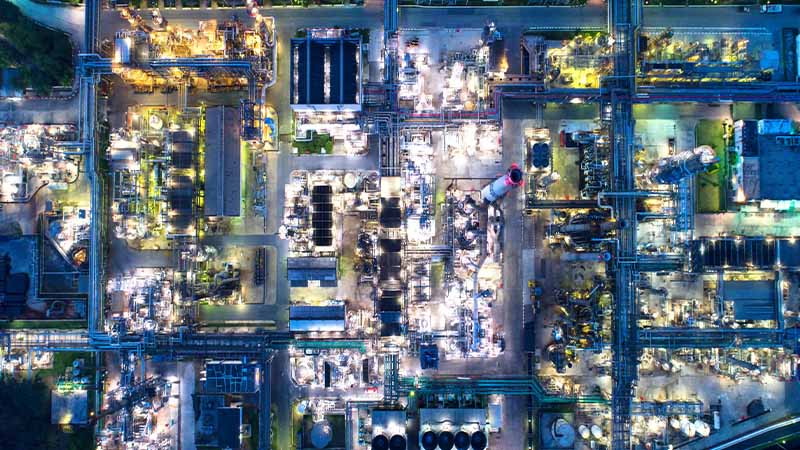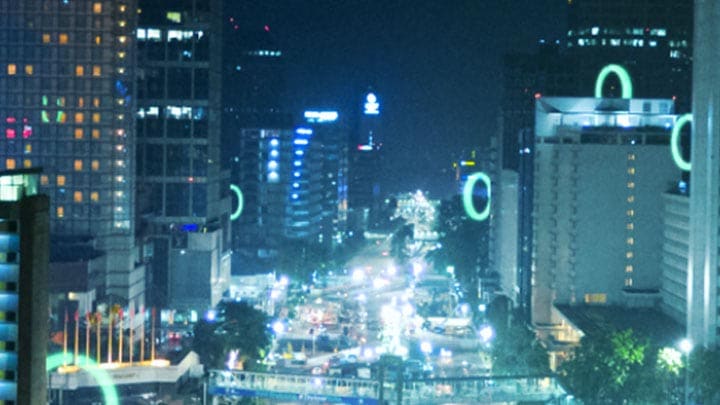Connected LED lighting offers competitive advantages
Connected LED lighting offers competitive advantages
Every business seeks to attain a competitive advantage by using methods to increase value while minimizing risk. Companies sometimes even use risk to their advantage.
Embedding sustainability goals within an industry or supply chain strategy broadens the definitions of value and risk. Value increases as consumers seek to purchase products from companies that embrace sustainable practices. A sustainability-centered strategy also gives companies a platform for managing climate-related risk. Increased value and risk management occur through efforts to decarbonize processes, reduce energy consumption, decrease waste, and extend product lifecycles. A range of competitive advantages become apparent by linking cost savings and earnings growth with sustainable approaches.
Competitive advantages occur through processes and products that meet specific performance standards. According to a recent McKinsey study, nearly 70%of consumers responded that they would pay an additional 5% for a green product that meet the same performance standards as comparable non-green products. However, producing an innovative product that aligns with a sustainability-based corporate strategy may challenge many industries and manufacturers. This challenge involves balancing traditional business values with sustainability goals.
The symbiotic relationship between companies and suppliers affects brand reputation, costs, and consumer confidence. Within that interdependence, supply chain emissions negatively impact business value and competitive advantages gained by companies that have either set or achieved sustainability goals. Studies indicate that—for many companies—supply chain emissions make up the majority of overall GHG emissions. As a result, leading companies have developed GHG reduction goals for suppliers. Food industry leaders, for example, have updated supplier codes of conduct to encourage adherence to conservation, decarbonization, and sustainability principles.
For mid-size and small companies that make up the supply chain, meeting environmental goals affects profitability. To offset the impact on smaller companies, industry alliances and coalitions assist suppliers with establishing emissions targets, implementing renewable energy sources, and reducing energy consumption. As suppliers become energy efficient, industry leaders help suppliers mitigate climate-related risk, navigate regulatory changes, and respond to market volatility. Because achieving sustainability goals impacts purchasing decisions, companies and suppliers emphasize frequent communication between business staff. Information shared by suppliers assists with tracking progress towards implementing energy efficient processes and finding opportunities for new transportation and packaging methods.

Facility managers can reduce Scope 1 emissions by retrofitting or redesigning lighting systems. Any size of industry or any part of the supply chain can increase energy efficiency and reduce operating costs through LED lighting. Replacing incandescent, high-pressure sodium (HPS), and fluorescent lighting fixtures with connected LED lighting offers the opportunity to reduce lighting-related energy costs by up to 80%. Long-term cost savings exist because of several factors:
The versatility of LED lighting allows companies to either retrofit or redesign systems. If lighting patterns satisfy operational needs, businesses can provide high-quality illumination for work areas by retrofitting existing lighting fixtures and circuits with LED luminaires. Another option involves a full lighting system redesign to match changing needs on the manufacturing floor. Retrofits or redesigns that include connected LED lighting can automatically change lighting conditions according to available daylight, number of people in a room, and work schedules.
Companies can manage the initial costs of lighting system retrofits or system redesigns through subscription Light-as-a-Service (LaaS) contracts and energy incentives. An LaaS subscription distributes the cost of installing an energy-efficient lighting system across a multiyear contract. Along with lowering the total cost of ownership, LaaS also includes service-level agreements (SLAs) that define vendor services during the project.
The installation of energy-efficient lighting systems also qualifies companies for financial assistance through national programs.
When considering employee health and well-being, LED lighting can be engineered or controlled to cause less strain on the eyes. In addition, the intensity and color temperatures of LED lighting can be managed to improve visual acuity and lower the risk of workplace accidents. Dynamic LED lighting experiences have the potential to improve worker alertness, vitality, and productivity by matching light levels with circadian rhythms.
Along with those capabilities, employees can personalize lighting conditions for comfort and productivity. Connected lighting systems also support the energy-efficiency requirements of facilities by sensing the number of individuals in a workspace and changing lighting, temperature, and humidity for the optimal working environment.
Successful green product design that meets performance standards pushes companies to move from a linear economic mindset to a strategy based on circularity. Rather than producing disposable products, manufacturers create durable, upgradable, reusable, repairable, and recyclable products that have longer operating lifecycles. Embedding circular design into product development involves:
Companies that put circular design principles into practice have a better opportunity for meeting sustainability goals and creating value. As an example, John Deere is advancing toward its 2030 sustainability objectives through the use of strategic objectives and initiatives based on circularity. These include:
To make progress toward its goals, John Deere has implemented projects to reduce Scope 1 and 2 emissions, and continues to collaborate with suppliers to measure, report, and mitigate emissions. During 2023, the equipment manufacturer achieved a 4% reduction in upstream and downstream CO2e emissions, a 15% reduction in operational CO2e emissions, and an 11% increase in waste reduction.
Each step towards a clear sustainability strategy attracts investors.
Digital technologies provide the foundation for collecting, collating, analyzing, sharing, and acting on data pulled from a wide range of sources. Digital lighting is no different. Energy efficiencies and reductions in carbon emissions gained through connected LED lighting systems can support business initiatives aimed at mitigating climate change and risk.
Improvements in workplace conditions enhance productivity and support financial goals. Connected lighting systems add to these benefits by emphasizing the health and well-being of employees. Responding to the human element and prioritizing individual needs encourages positive workplace cultures, fosters innovation, and helps build competitive advantage. These in turn support business growth and stakeholder engagement.
To learn more about how connected LED technologies can assist your business with building a sustainability-based strategy, read Directions in Sustainability for Industry.
Signify Global Media relations - Professional Lighting
Claire Phillips
Tel: +44 7956 489081
Email: claire.phillips@signify.com
Signify (Euronext: LIGHT) is the world leader in lighting for professionals and consumers and lighting for the Internet of Things. Our Philips products, Interact connected lighting systems and data-enabled services, deliver business value and transform life in homes, buildings and public spaces. In 2022, we had sales of EUR 7.5 billion, approximately 35,000 employees and a presence in over 70 countries. We unlock the extraordinary potential of light for brighter lives and a better world. We achieved carbon neutrality in our operations in 2020, have been in the Dow Jones Sustainability World Index since our IPO for six consecutive years and were named Industry Leader in 2017, 2018 and 2019. News from Signify is located at the Newsroom, Twitter, LinkedIn and Instagram. Information for investors can be found on the Investor Relations page.
